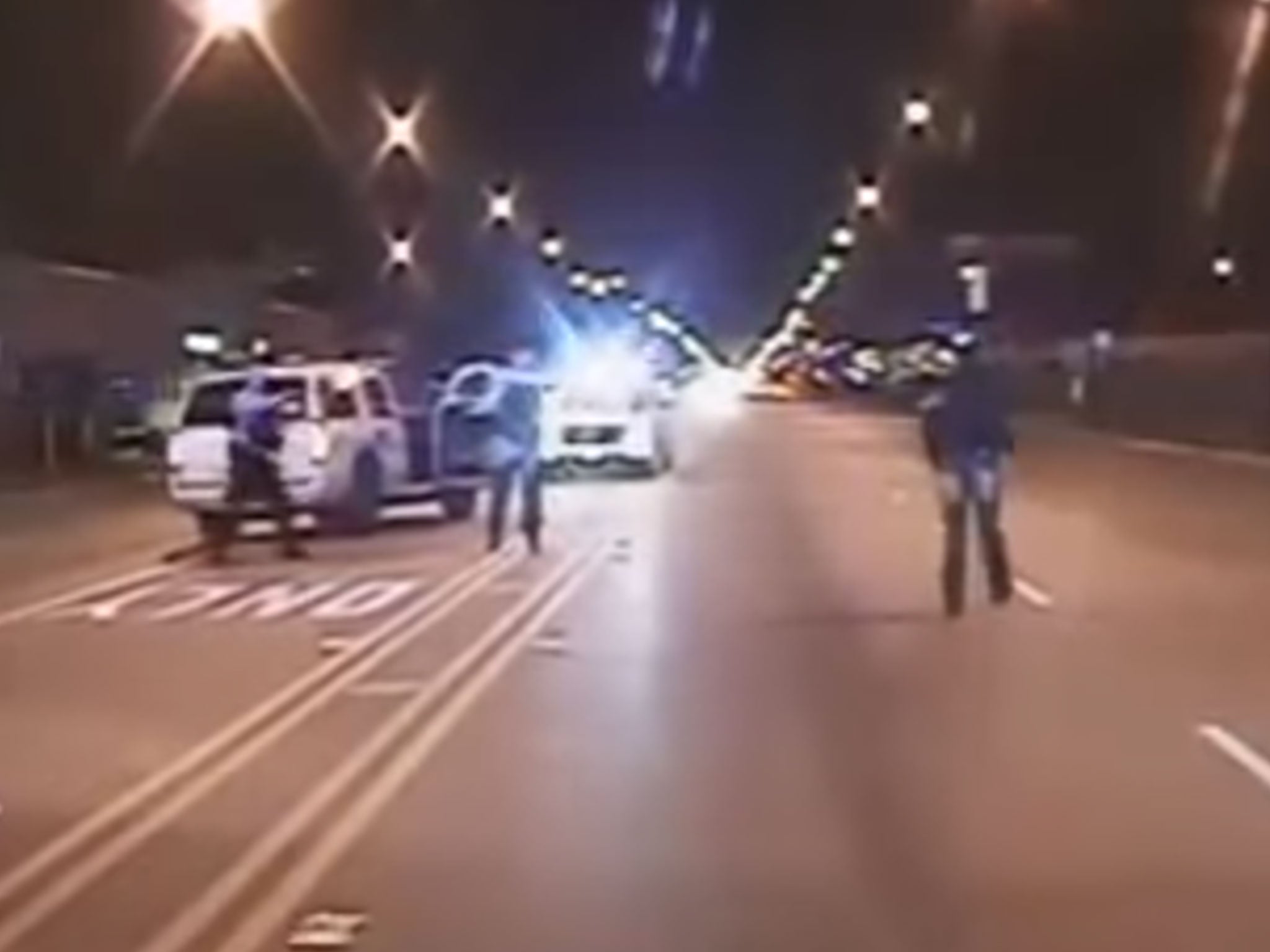Laquan McDonald: Video of Chicago police shooting dead black teenager brings protests and echoes of Ferguson
Warning: Some viewers may find the footage distressing
Your support helps us to tell the story
From reproductive rights to climate change to Big Tech, The Independent is on the ground when the story is developing. Whether it's investigating the financials of Elon Musk's pro-Trump PAC or producing our latest documentary, 'The A Word', which shines a light on the American women fighting for reproductive rights, we know how important it is to parse out the facts from the messaging.
At such a critical moment in US history, we need reporters on the ground. Your donation allows us to keep sending journalists to speak to both sides of the story.
The Independent is trusted by Americans across the entire political spectrum. And unlike many other quality news outlets, we choose not to lock Americans out of our reporting and analysis with paywalls. We believe quality journalism should be available to everyone, paid for by those who can afford it.
Your support makes all the difference.Protesters in the United States plan to block the main shopping thoroughfare in Chicago, Michigan Avenue, during post-Thanksgiving sales on Friday after a video was released showing the fatal shooting of a black teenager by a white police officer.
Chicago police officer Jason Van Dyke shot 17-year-old Laquan McDonald 16 times in 15 seconds during the incident in October 2014, emptying his magazine as the teenager lay crumpled on the ground. On Tuesday Mr Van Dyke was charged with first-degree murder, while dash-cam footage from the scene was released on the orders of a judge.
Hundreds of peaceful demonstrators converged on the centre of Chicago on Tuesday night, a year to the day since riots engulfed Ferguson, Missouri, over a grand jury’s decision not to charge the white officer who shot dead another black teenager, Michael Brown. It took city authorities 13 months to share the footage, fearful of the sort of unrest that occurred in Ferguson and other US cities in response to police killings of young black men. Before its release Chicago Mayor Rahm Emanuel pleaded for calm, saying he hoped it could be a “moment of understanding”.
The disturbing dash-cam video, which has no sound, shows McDonald walking in the middle of a four-lane city street as several squad cars surround him. Police were responding to reports that the teenager had been seen stealing car radios. Two police officers emerge from their vehicles, drawing their guns. McDonald begins to move away from them until one of the officers opens fire at close range.
As McDonald spins and collapses the vehicle with the camera rolls to a stop, leaving the officers out of frame. McDonald can be seen twitching while at least two puffs of smoke are visible on his body, suggesting the officer continued to fire after the teenager dropped to the ground.

Another officer steps into frame and kicks away a three-inch knife that McDonald is believed to have been holding. The video clearly contradicts previous police claims that officers were forced to shoot McDonald because he lunged at them with the knife.
Demonstrators reportedly chanted the words “16 shots” as they circled police cars in central Chicago on Tuesday. Five people were arrested for minor offences but police said the protests for the most part remained peaceful.
Cook County State’s Attorney Anita Alvarez, who charged Mr Van Dyke with murder in McDonald’s death, described the 40-second clip as “chilling”. She said: “To watch a 17-year-old young man die in such a violent manner is deeply disturbing. I have absolutely no doubt that this video will tear at the hearts of all Chicagoans.” Daniel Herbert, Mr Van Dyke’s lawyer, said the video presented a “distorted” image and that his client now feared for his life.
“The reason my client fired his weapon that evening back in October 2014 is that he truly was in fear for his life as well as the lives of his fellow officers,” Mr Herbert told CNN. “Someone called for a Taser. No Taser was available.”
Mr Herbert said that when he initially looked at the video footage he found it “difficult to explain”. Yet, he said, the more he looked at it the more he believed his client’s actions were justified.
“Video by its nature is two-dimensional. It distorts images. So what appears to be clear on a video sometimes is not always that clear,” Mr Herbert said.
Local media said at least 18 citizen complaints had previously been filed against Mr Van Dyke during his 14-year career but he was never disciplined, according to a University of Chicago database. Eight of the complaints alleged excessive force, two involving the use of a firearm.

Join our commenting forum
Join thought-provoking conversations, follow other Independent readers and see their replies
Comments